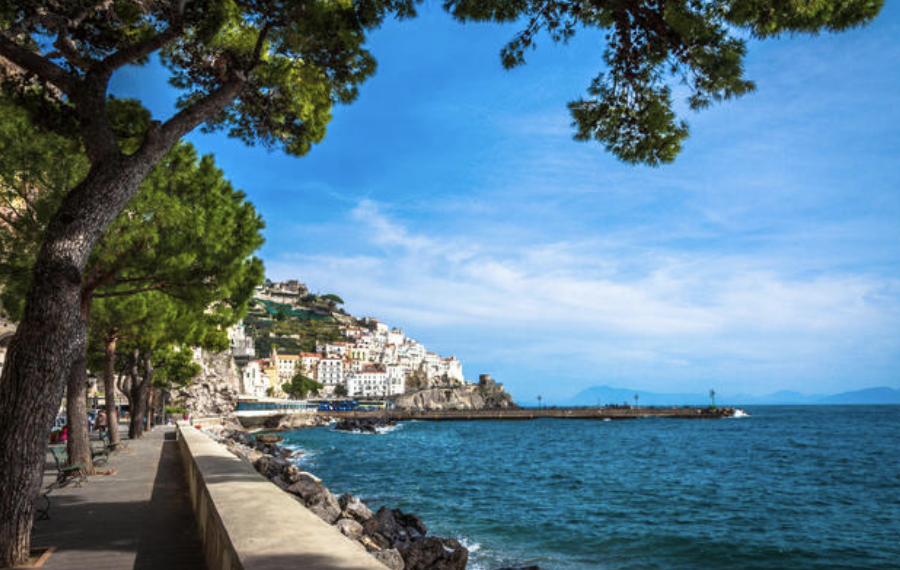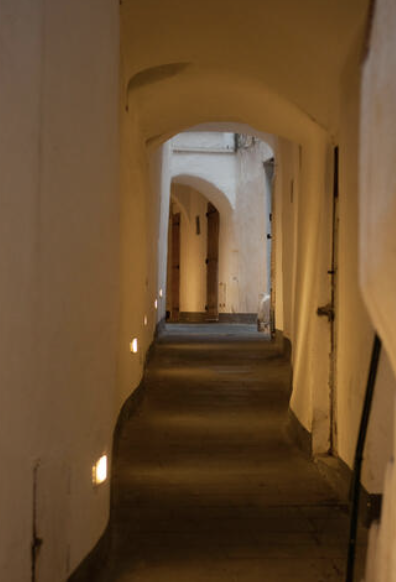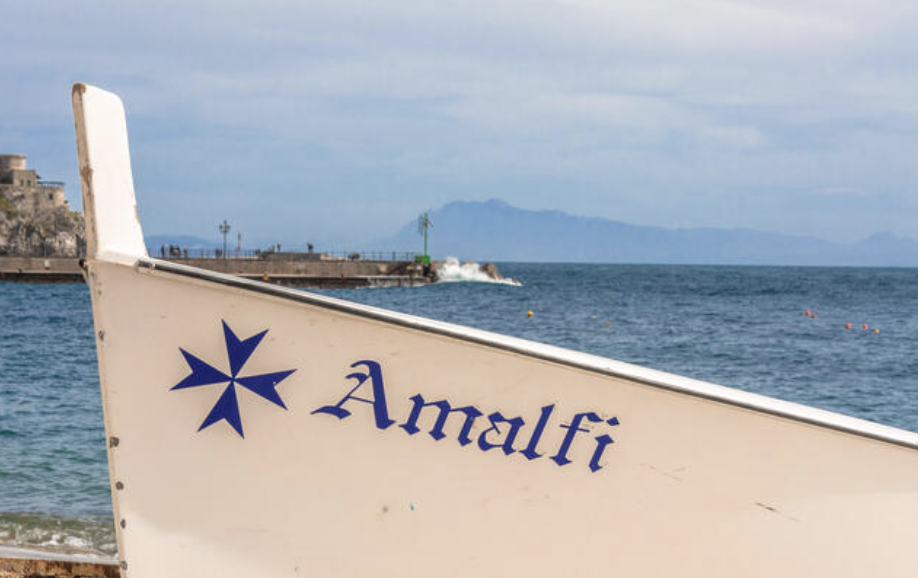All About Amalfi: An Itinerary of History, Culture, and Culinary Treasures
Amalfi: Tourist Trap or Not?
The Tourist Magnet Town
A charming town on the breathtaking Amalfi Coast and attracts countless visitors year-round. This little town acts as a magnet for tourists.
Many visitors rush through the city center and treat the place as just another crowded tourist destination. Selfie, snack, check!
Sure, tasting the iconic lemon sorbet proves irresistible and a must-do experience. However, settling for an overpriced mediocre pizza at a questionable trattoria? Trying through the crowd to catch a glimpse of the dome before continuing your rush to catch your ferry? That feels far from a pleasant experience.

Escaping the Tourist Trap: Amalfi’s Real Charm
But there’s a way to uncover the authentic charm of Amalfi and escape the tourist trap facade. The key lies in slowing down. To learn about the local history and venture beyond the main square.
In this blog post, I’ll be your guide and reveal the hidden gems and lesser-known corners of Amalfi.
I hope it will help you to have a truly memorable visit to Italy and the Amalfi Coast.
Let’s step into the adventure together and discover the rich history and culture of Amalfi.
What is Amalfi Famous For?
The Duomo, Lemons, Bussola, and Charm
Amalfi is renowned for several things, including its beautiful Cathedral (Duomo), the exquisite lemons, the invention of the compass (bussola), and its undeniable charm. Additionally, the town is well-known for its signature sandals and the famous Limoncello liqueur. Amalfi also has a rich history of paper-making.
The local variation of lemons is called “Sfusato Amlfitano”. It has a thicker skin and is sweeter than other type of lemons.
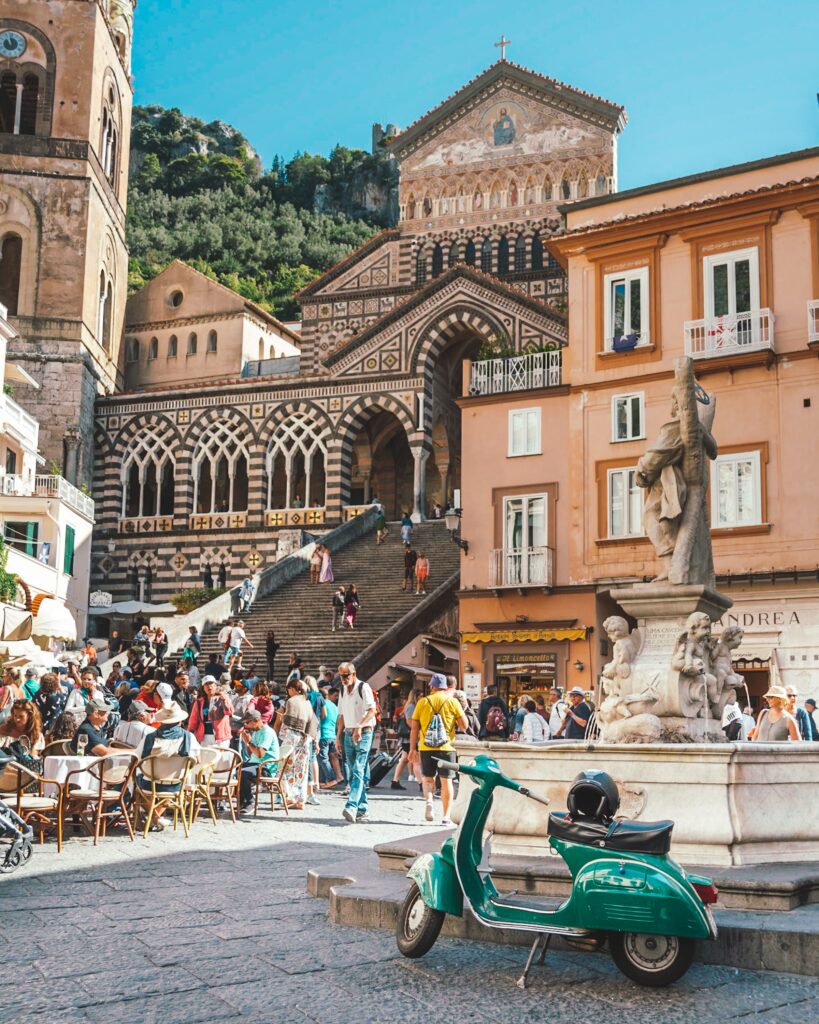

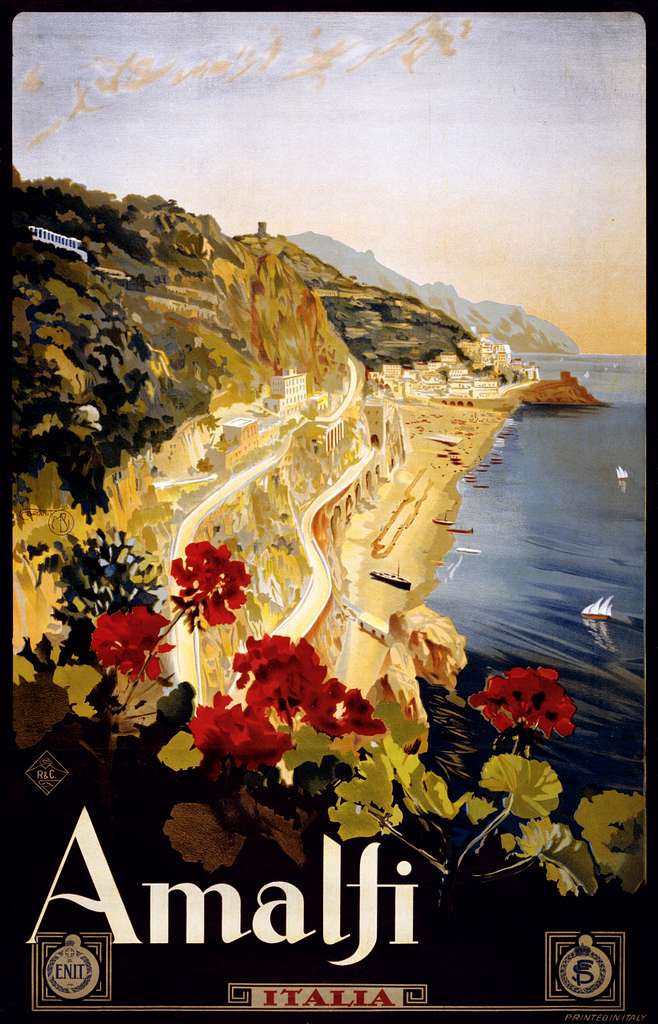
Short History of Amalfi and the Maritime Republic
There were four famous Maritime Republics in the actual territory of Italy: Pisa, Genoa, Venice, and Amalfi.
The first one established, amongst them, and for a long time, the most dominant one was Amalfi.
During this period, the Amalfitan coast thrived as a significant center of culture. Amalfitans perfected the compass, a crucial navigation tool that allowed them to navigate even during the daytime.
They had cultural and commercial relationships with various places around the Mediterranean Sea. Notably, Amalfitan merchants even built a church in Jerusalem.
.
The Tabula Amalfitana (Tabula Amalphitana)
The Tabula Amalfitana is The first collection of navigation rules.
The original Amalfitan Marine Codex is conserved in the Commune of Amalfi (town hall).

Notes on the Compass (Bussola)

The compass, called “bussola” in Italian, gets its name from the boxwood (“legno di bosso”) used to make the original compass. According to popular folklore, Flavio Gioia is known as the inventor of the compass. Although he may be a legend and never actually existed. There is a bronze statue of Flavio Gioia on the square at the harbor in Amalfi, created in 1900 by the local sculptor Alfonso Balzico.
Image source: Photo by Jordan Madrid /Unsplash
The compass originated in ancient China and later spread to the West, then perfectionised in Amalfi.
Originally organised as a Republic, Amalfi later became a Duchy.
During the 11th and 12th centuries, Amalfi was dominant among the Maritime Republics, with its merchants having significant influence all over the Mediterranean.
For more in-depth information: “Io La Campania” by Paolo Romano.
Notes on the Paper Mills (“Le Cartiere”)
During the 19th century, Amalfi had 60 working paper mills, with Amatruda being the first, and only one that remains operational today. The Amatruda paper mill serves as the official paper supplier of the Vatican, producing all the documents signed by the Pope.
Notes on the Event of the Regatta
The Regatta of the Historical Marine Republics is an annual sporting event.
During the Regatta the four maritime republics compete against each other. Amalfi’s symbol is the winged rearing horse on the prow of the ships. The location of the race changes every fourth year and is hosted in rotation between the participating cities. Usually, it takes place between May and the end of July. In 2024 the Regatta will be held in Genoa. In 2025 will be held in Amalfi. The boat race starts with a historical parade. Establishment in 1955 has a longstanding tradition.
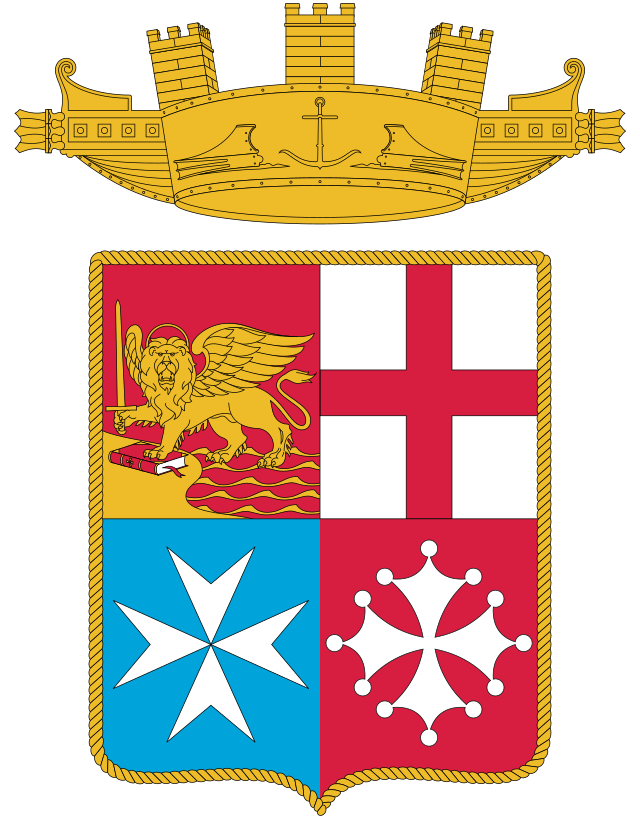
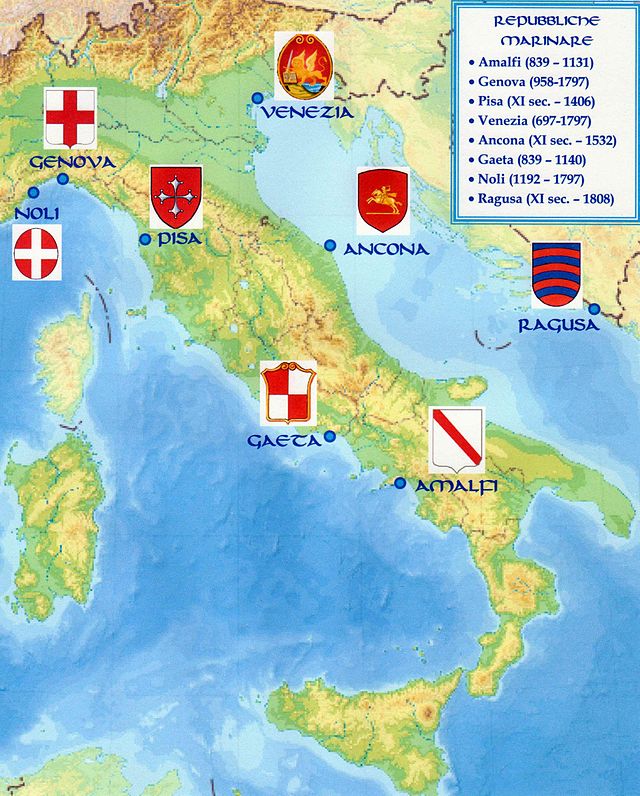

Timeline of Amalfi History:
- 1st century AD: Settled by the Romans, and evidence of Roman villas and artifacts can still be found in the area (visit them in Minori or Positano).
- 4th-7th centuries: The Amalfitan Republic emerges as a major maritime and trading power in the Mediterranean.
- 9th century: Compilation of the Tavole Amalfitane (Amalfi Tables), a fundamental legal reference for maritime law.
- 12th-13th centuries: Amalfi faces challenges from other maritime republics like Pisa and Genoa. Then the once-powerful republic begins to weaken.
- Late 14th century: Amalfi becomes part of the Kingdom of Naples and loses its economic and political power.
- 17th-18th centuries: The Amalfi paper industry experiences a revival with the rise of paper mills in the region.
- 20th century: Amalfi transforms into a popular tourist destination and becomes part of the UNESCO World Heritage site of the Amalfi Coast.
What to Visit when in the town of Amalfi?
Arsenale di Amalfi – antico Arsenale della Repubblica Marinara
If you are not in a rush when visiting Amalfi, it’s interesting to see this museum. And learn about the history of the Town.
The Arsenale di Amalfi was an ancient shipyard in Amalfi, Italy. And this is the place where they built and repaired warships.
The shipyard was built on a lime foundation on top of sand and volcanic material from Mount Vesuvius. Moreover, Over time, storms and road construction caused some damage to the original structure.
After the decline of Amalfi’s maritime power, the Arsenale served various purposes, even becoming a bus depot. However, because of its historical significance was later recognized, and it underwent restoration, preserving its ancient glory.
Today the Arsenale di Amalfi houses a part of the Museum of the Compass and Maritime Duchy’s collections and showcases Amalfi’s ancient history from Roman times to today.
Established in 2010, the museum collects and highlights the city’s fascinating past, from its golden age as a Maritime Republic and Duchy, making significant contributions to Italy’s history.
Opening Hours
| Period | Days | Opening Hours |
|---|---|---|
| Dal 01 aprile al 31 maggio | Everyday | dalle ore 10.00 alle ore 19.00 |
| Dal 01 giugno al 30 settembre | Everyday | dalle ore 10.00 alle ore 22.00 |
| Dal 01 ottobre al 31 dicembre | Dal martedì a domenica | ore 10.30 – 13.30 / 16.00 – 19.00 Closed on Mondays |
The entrance fee is 3 Euro and the reduced ticket costs 1,50 euro.
Address of the Museum: Largo Cesareo Console, 3 angolo Via Camera, 84011, Amalfi Italy.
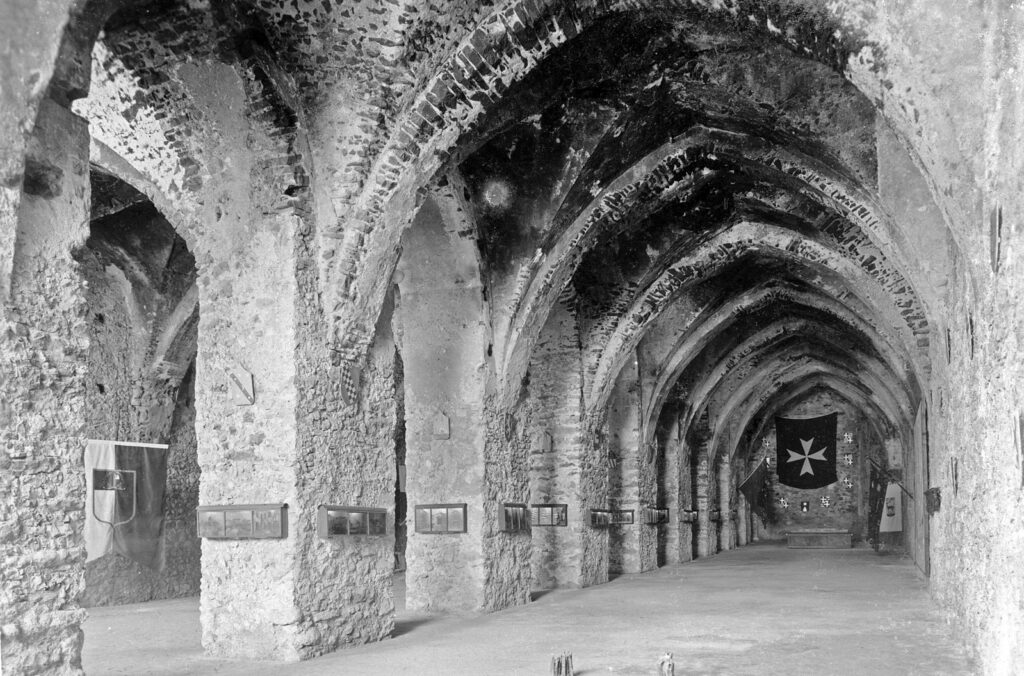
The Paper Museum in Amalfi (Museo della Carta)
It’s worth a visit when in Amalfi!
This little museum is all about the history of paper mills, and it’s super cool. You can even try making paper yourself.
The whole experience is fascinating and fun, giving you a deeper insight into the art of papermaking. So, I recommend that you add it to your Amalfi itinerary.


Opening Hours
| Period | Opening Days | Opening Hours | Last Admission |
|---|---|---|---|
| From 01/03 to 31/10 | Every day | 10:00 a.m. to 7:00 p.m. | 6:20 p.m. |
| From 01/11 to 23/12 | Every day except Monday | 10:00 a.m. to 5:00 p.m. | 4:20 p.m. |
| December 24-25-26 | Closed | – | – |
| From 27/12 to 06/01 | Every day | 10:00 a.m. to 7:00 p.m. | 6:20 p.m. |
| From 07/01 to 31/01 | Every day except Monday | 10:00 a.m. to 5:00 p.m. | 4:20 p.m. |
What to Do in Amalfi?
Outdoor Adventures: Hiking Trails from the Town of Amalfi

Valle delle Ferriere and Valle Dei Mulini
This is the most famous hike in Amalfi, and it will bring you to an enchanted and prehistoric world, deep in the subtropical Valley. Because the valley is rich in water the climate is hot and humid. You can also see many waterfalls and water streams along the way. On the road are abandoned paper mills and ancient ruins too. Visit the Paper Museum before taking the trail, if you are interested and have time. Check out my detailed post on this hike where you will find where to start and how much time you need (start: Near Paper Museum). You can make this hike even if you are only visiting the Town of Amalfi for a day trip. It takes around 3 hours to complete.
Torre Del Ziro – Off the Beaten Path Hike
A lesser known off-the-beaten-path hike, just above Amalfi.
The walk is easy, but In order to reach the tower you have to climb up to Pontone first. You can get to Pontone by local bus too, but buses are not very frequent.
It’s a walk worth to taking if you have time. Firstly, the trail offers a fascinating view of Amalfi and Atrani. Secondly, it leads you to the historical tower surrounded by legends.
Beautiful walk because it’s mostly under shady pine trees.
Admire the Sant’Andrea Fountain
Located in the heart of the town.
Features the statue of Saint Andrea, the local patron saint.
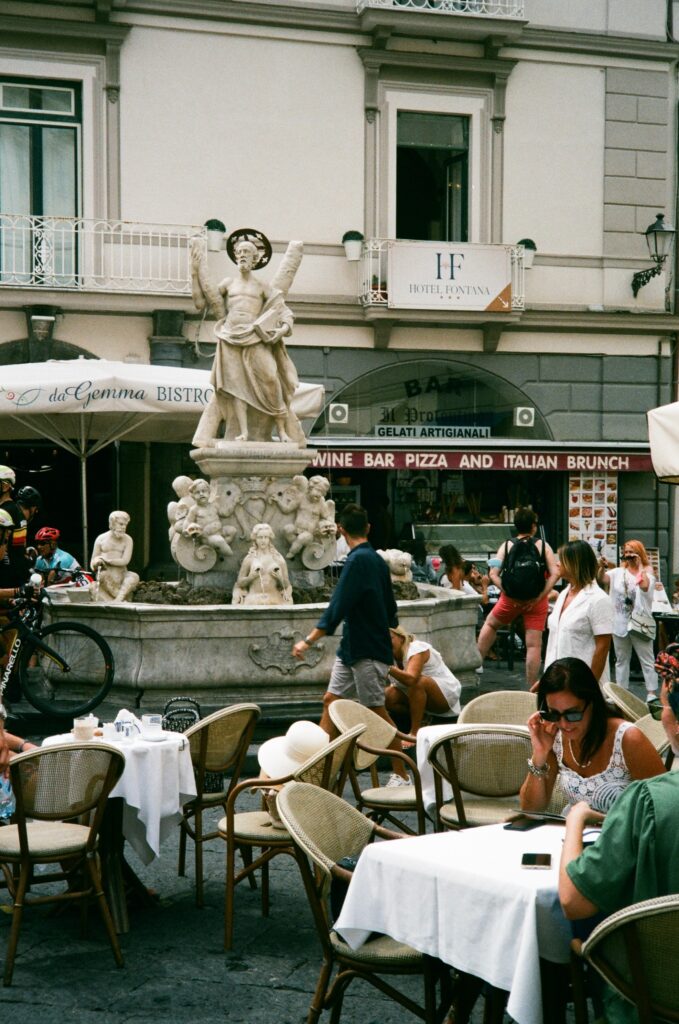
The patron saint, as a concept, holds significant importance in Italian culture, especially in the southern regions. Amalfi’s patron saint is St. Andrew, and you’ll find many statues and buildings dedicated to him. The cathedral is called the Cathedral of St. Andrew (Cattedrale di Sant’Andrea).
Andrew is a popular name in Amalfi. The day of the saint is celebrated with grand festivities, including spectacular fireworks and extra ferries for visitors to get back to Salerno, much like Christmas.
It is a very special day in the life of the town and its residents. Locals relax and hang around all day long, creating a laid-back and welcoming atmosphere during the festivities.
Photo by Giusi Borrasi / Unsplash
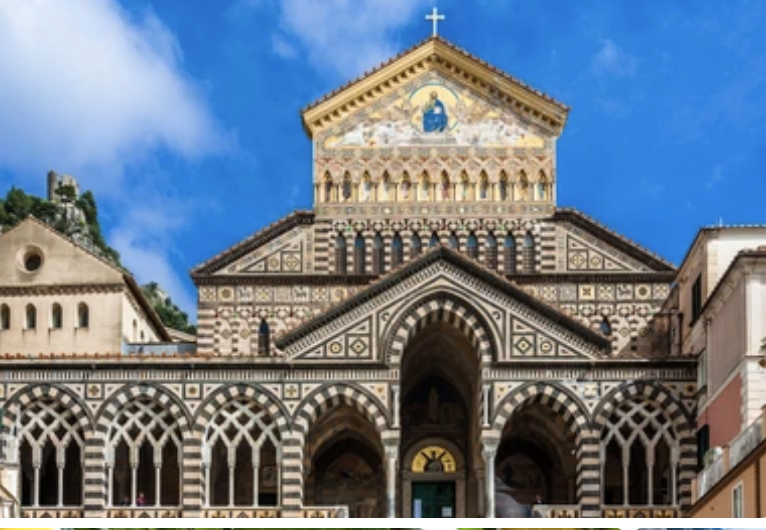
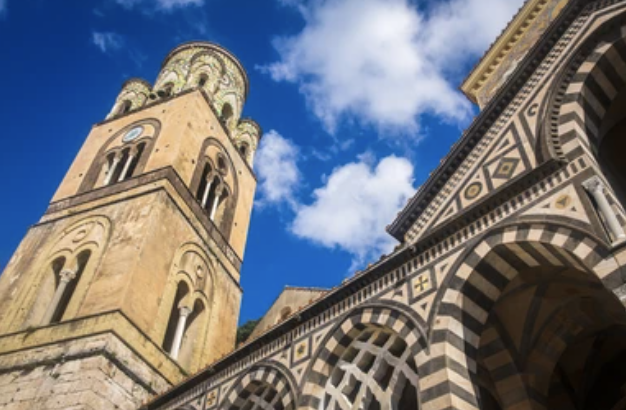
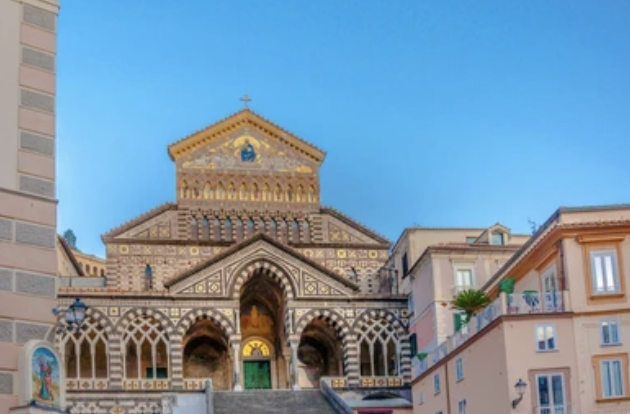
Visit The Cathedral and the Cloister of Paradise
Amalfi Cathedral:
A magnificent medieval cathedral with a unique blend of architectural styles, including Arab-Norman and Byzantine influences. Inside, you’ll find the Crypt of St. Andrew, an important pilgrimage site.
Paradise Cloister:
Connected to the cathedral, this 13th-century cloister boasts Moorish-style architecture, beautiful gardens, and a peaceful ambiance. It’s a stunning place to visit.
Opening times: Open daily. March to June: 9:00 AM – 6:45 PM. July to September: 9:00 AM – 7:45 PM. November to February: 10:00 AM – 1:00 PM & 2:30 PM – 4:3Ticket Price: 3 EUR
Where and What to Eat in Amalfi?
Check out Pansa
Of course, the Cathedral is the main landmark, but if you worship Italian café culture, there is a place waiting for you just next to it: The historic bar of Andrea Pansa.
This place is a bit of a time machine and has been around since the 1850s, back during the grand tour era when rich European nobles would walk in. History and aroma of freshly brewed cafe lingers between the walls. Owned by the Pansa family for generations, it’s a true gem with a rich history.
You’ve got to try their espresso or cappuccino, and don’t miss out on their delightful desserts!
Not to miss, scorze di orange and lemon with chocolate – my personal favourite. These little gems are so sooo addictive.
Sitting outside at Pansa is an exquisite experience. Imagine sipping a creamy Italian cappuccino and savoring a delightful dessert while indulging in the art of people-watching, observing the bustling square from this intimate angle.
This place is indeed an exclusive treat (therefore comes with a higher price tag compared to other less famous places.) But the desserts are top-notch, and the place has a touch of luxury. Here the walls emit the old-world charm. It’s totally worth it!
Pro tip: You can just pop in and get a cup of espresso while standing by the bar, just like the Italians do. And the best part? You won’t get charged a service fee for ordering this way! So, it’s not just delicious but also budget-friendly!
The proper etiquette to do this is to go to the cashier and pay for your espresso, and simply say “1 espresso al banco” (1 espresso at the counter).
Then, turn to the barista and show your bill while confidently placing your order out loud, saying “café per favore” (coffee, please). They will prepare your coffee and in many cases, serve it with a small glass of water too. You can consume your coffee or cappuccino standing at the bar.
They’ve also opened a second point of sale recently, just across the square. It’s a more modern-looking shop.
This shop sells ice cream to take away. Inside, their chocolate production and scorze (peels of oranges and citrus fruits dipped in chocolate) are the stars of the exhibition.
Personally, I prefer the atmosphere and the staff of the main shop. Here, they offer only four different variations of ice cream, but that includes nocciola (hazelnut) and pistachio, so who needs more?
Cafe consumed while standing at the counter anywhere in Italy should be priced between 1,20 and 1,80 euro. Cappuccino usually ranges between 2,50 to 3,50. As a general rule of thumb in many Italian bars, it’s common practice to pay first and then consume your order. This is especially true for orders placed at the counter or bar area. However, when you are seated at a table and served by a waiter or waitress, the payment is typically made at the end of your meal. There is almost always a service fee when sitting down.
The Lemon Sorbet Sensation
Taste the lemon Sorbet, a Frozen Bliss that will make Your Insta Pop!
You’ll spot everyone roaming around with GIANT lemons in hand: And there’s a good reason why!
Those aren’t just lemons, these lemons are filled with delicious lemon sorbet.
A sorbet is a typical Italian dessert. Its granular ice infused with the tangy essence of Amalfi lemons, blended to perfection with water, sugar, and lemon juice.
Here in the Amalfi Coast, the presentation is pure genius – they carve out the lemons, fill them with the sorbet, and put them back together!
Enjoy, it’s refreshing and delicious, a true frozen bliss!
The Amalfi lemons are famous for being sweeter and juicier than normal lemons. Also, they grow larger than usual lemons. The local variety is called Sfusato Amalfitano. While visiting the Amalfi Coast, you should also try limoncello, a popular liqueur made from this kind of lemons. It’s a must-try during your holiday on the Amalfi Coast. One sip will instantly transport you to the enchanting world of Dolce Vita!
Street Food and Budget-Friendly Options
The “Cuoppo fritto” is a popular street food in Amalfi that you can eat while walking around.
Pizzeterie Mediterranea Snack Bar:
This local pizzeria offers slices of tasty pizza and arancini, making it a budget-friendly and tasty option for a quick bite.
Souvenir Shopping in Amalfi
Lemon-themed Souvenirs
ANYTHING with lemons on it, you will probably find it. Everything from classic old lemon magnets to lemon-printed socks, and lemon-flavoured toothbrush. And who knows what else – lemon-scented unicorn horns, anybody?
Amalfi Sandals: A Must-Buy
There are multiple places offering them, and many people who bought them say they are indestructible.
You can choose your own design, and you can see them made right before your eyes in a short amount of time. It’s artisan production at its finest—a truly unique and useful souvenir to bring home, or should I say, it can bring you home.
If you have limited time or missed your chance to shop for them in Amalfi, you can find them in Sorrento, Capri, Maiori, and other locations along the coast too.
What else to buy?
Popular things to buy are: Limoncello, extra virgin olive oil and ceramics Also, local wine and artworks, as well as Amalfi-themed fashion items, are great choices. Amalfi Paper Products are my absolute favourites.
Gourmet Delights: When my sister visited me on the coast, and we came to Amalfi, she bought a tasty pistachio cream. At the shop ‘Nino and Friends,’ you can try and taste almost everything they offer. They will give you a free sample of chocolate, praline, truffle cream, and other delicious things. It’s a cool shop!
Around Amalfi
From Amalfi, you can easily walk to the nearby Atrani.
Atrani is a stunning little town, built together in a crib-like manner. The village is like a postcard come to life.
A bit more off the beaten path, the village of Pogerola offers fantastic views of Amalfi.
Of course, you are a short, less than 30-minute ferry ride from the fabulous Positano too.
I put together a perfect 1 or 2-day Itinerary for visiting Positano. You will find all the info you need to plan a day trip.
You can also visit the Stunning Ravello, it’s only a short bus ride from Amalfi. I just wrote a guide on what to visit and do in Ravello. You will find tips on restaurants, gluten-free foods, and public transport too.
How to Get to Amalfi?
Amalfi is an absolutely stunning coastal town in southern Italy. With fascinating cliffs and idyllic beaches, it’s a place you won’t want to miss during your travels. The journey to Amalfi is an adventure in its own right, so let me share with you the easiest ways to get there from different spots around.
From Salerno:
The city of Salerno is well-connected to Amalfi, making it a convenient starting point. The easiest way to travel is by taking a ferry ride along the Amalfi Coast. Ferries operate from April to October, and the journey offers picturesque views of the coastline. Most ferries are operated by the company Travelmare, and a single ticket from Salerno to Amalfi costs 10 euros.
You can also take a SITA bus from Salerno to Amalfi, which takes around 60 minutes. A single one-way ticket costs approximately 3 euros. However, during the high season, the bus can be crowded and slow due to traffic.
From Naples (Napoli)
Naples, being a major city in Italy, is another popular starting point for a trip to Amalfi. From Naples, you can take a direct ferry to Amalfi, which is a fantastic way to enjoy the beauty of the Tyrrhenian Sea and the Amalfi Coast. One of the ferry companies offering this route is called NLG.
You can take the train from Naples to Salerno and then the SITA bus from Salerno to Amalfi. Or change for a ferry in Salerno, the train station is within walking distance from the ferry terminal. Service toward Amalfi is frequent. Between Naples and Salerno, there are different classes of train services operating. The cheapest option is the Regionale train, followed by the IC (InterCity) train. The most expensive but fastest is the Frecciarossa (Red Arrow) train.
From Naples Airport, you can find a direct shuttle service that goes directly to Amalfi.
There is another route to Amalfi, via Sorrento with the “Circumvesuviana” train then the SITA bus, but it’s not recommended. It tends to be longer, and the train has many intermediate stops. Also, buses on this route can be even more crowded, than in Salerno.
Lastly, you have the option to book a private driver from Napoli to Amalfi.
From Rome:
For travellers arriving in Rome, reaching Amalfi involves a combination of train and bus journeys. First, take a train from Rome to Salerno, which offers several direct connections. You can choose from different types of trains, including regional, IC (InterCity), and Frecciarossa trains. The high-speed train (called Frecciarossa) takes only 2 hours to reach Salerno and is very comfortable. From Salerno, follow the options mentioned above for traveling from Salerno to Amalfi.
Otherwise, book a private driver from Rome to Amalfi.
From Positano:
Positano is relatively close to Amalfi. You can take a SITA bus from Positano to Amalfi, which is a short and scenic ride along the coastal road. Be prepared, the bus can get very crowded during high season. I put together a perfect 1 or 2-day Itinerary for visiting Positano.
However, you can book a private driver from Positano to Amalfi too.
From Sorrento:
If you’re staying in Sorrento, firstly, you can reach Amalfi by taking a SITA bus. You can visit the Town of Amalfi as a day trip. The bus ride takes you through picturesque landscapes, including the famous Amalfi Drive, renowned for its stunning views.
Secondly, you can also take a Ferry.
Thirdly, Book private a driver from Sorrento to Amalfi.
Consider car renting, but because of traffic, it is recommended in off-season. In high season a motorbike or scooter is a better option. Because it is much easier to find parking space with a small vespa than with a car.
